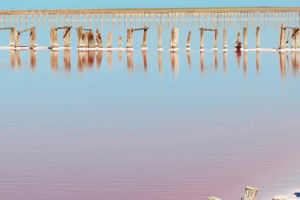The total area of lakes on the earth is 2.7 million square kilometers, accounting for 1.8% of the land area. There are 35 lakes with an area of more than 5,000 square kilometers. The source of lake water is precipitation, surface runoff, groundwater, and some come from ice and snow meltwater.
Lakes can be divided into structural lakes, crater lakes, glacial lakes, dammed lakes, karst lakes, river lakes, wind lakes, sea lakes and artificial lakes according to their origins.
Many photography enthusiasts do not know how to shoot lakes. Next, we will introduce several shooting methods.
Find the right opportunity.
The water in different places will show different colors due to geological, climate and other reasons, making the water surface show a very beautiful color.
Shoot at sunrise and sunset for best results. At this time, the color of the sky is changeable, and the sunset and clouds can add a lot of color to the photo.
When shooting waterscapes, try to choose soft light so that the water surface presents very saturated colors.
composition.
The rule of thirds composition. The rule is to place the horizontal line at the top or bottom 1/3 of the picture when shooting the water surface, which is more in line with visual aesthetics.
When composing a picture, integrating the sky and water into the picture can not only form a beautiful symmetrical composition, but also the colors of the sky and clouds will be reflected in the water, and the color of the picture will be richer and more charming.
Add characters.
When shooting, you can use the backlight to process companions such as birds and yachts into silhouettes or semi-silhouettes.
The foreground can also be appropriately increased to break the openness and monotony of the lake surface, thereby increasing the spatial depth and three-dimensionality of the picture.
For example, lake branches, wildflowers, rocks, etc. are all good references.
Use reflections.
The reflection formed by the lake is combined with the ground scene to form a perfectly symmetrical composition.
Because the water scatters some light, the brightness of the shot is usually lower than the brightness of the real scene.
The choice of horizontal frame and vertical frame will bring different visual experience.
Usually, the horizontal frame will highlight the breadth of the picture, and the scenery displayed in the picture will be more abundant.
Due to the narrow space, the mullion can better highlight the subject and highlight the role of a certain part of the picture.
Take a panorama.
Take a panorama and get a panoramic view of the lake.
There are many famous lakes in the world, such as Lake Victoria, Lake Austin, Lake Superior and so on.
Different lakes have different characteristics and can capture different scenery. Friends who like photography can definitely take beautiful photos.


